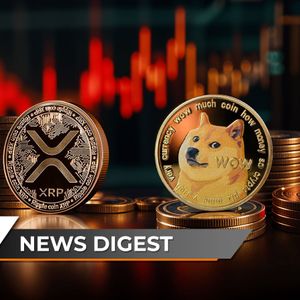Market Pulse
The convergence of traditional finance and blockchain technology is reaching a critical inflection point, as institutional players increasingly turn their attention to tokenized real-world assets (RWAs). This burgeoning sector, which digitizes tangible and intangible assets on a blockchain, represents more than just a niche trend; it signifies a fundamental shift in how value is perceived, exchanged, and managed within global financial markets. From real estate and private credit to fine art and intellectual property, the potential for efficiency, liquidity, and transparency offered by RWAs is attracting serious capital and technological investment from some of the world’s largest financial institutions.
The Maturing RWA Landscape
Once largely confined to experimental projects, the tokenized RWA market is rapidly gaining institutional validation. Major banks, asset managers, and fintech innovators are exploring various applications, driven by a desire to unlock new revenue streams, reduce operational costs, and offer enhanced investment opportunities to clients. This maturation is evident in the growing number of pilot programs, strategic partnerships, and dedicated R&D efforts aimed at building robust infrastructure for digital asset securities.
- Increased Capital Efficiency: Tokenization can fractionalize high-value assets, making them accessible to a wider pool of investors and improving capital deployment.
- Enhanced Liquidity: Creating secondary markets on blockchain allows for easier transfer and trading of traditionally illiquid assets.
- Operational Streamlining: Smart contracts automate many manual processes, reducing settlement times and administrative overhead.
- Transparency and Auditability: Blockchain’s immutable ledger provides a clear, verifiable record of ownership and transactions.
Technological Underpinnings and Market Infrastructure
The shift towards institutional RWAs is heavily reliant on the development of sophisticated blockchain infrastructure. Enterprises are not just looking for a ledger; they require secure, scalable, and compliant platforms that can integrate seamlessly with existing financial systems. Permissioned blockchains and hybrid solutions are often favored for their ability to balance the inherent transparency of distributed ledgers with the need for privacy, regulatory control, and robust identity verification.
- Enterprise-Grade Blockchain Platforms: Solutions like Hyperledger Fabric, Corda, and private Ethereum instances offer the control and performance required by institutions.
- Regulatory Sandboxes and Clear Frameworks: Governments and regulatory bodies are gradually developing guidelines that provide a legal foundation for digital asset issuance and trading.
- Interoperability Solutions: Bridging traditional finance with various blockchain networks is crucial for fostering a cohesive RWA ecosystem.
- Custodian Services and Oracles: Specialized digital asset custodians ensure the secure storage of private keys, while reliable oracles connect real-world data to smart contracts.
Benefits and Challenges for Institutional Adoption
While the long-term benefits of tokenized RWAs are compelling, institutions face a unique set of challenges in their adoption journey. Navigating complex regulatory landscapes across different jurisdictions, ensuring robust cybersecurity, and achieving seamless interoperability with legacy systems are paramount. However, the promise of democratizing access to exclusive asset classes and significantly improving market efficiencies continues to drive innovation in this space.
- Pros:
- Access to global investor base for funding.
- Fractional ownership democratizes investment.
- Potential for innovative financial products and services.
- Cons:
- Fragmented global regulatory environment.
- Technological integration complexities with legacy systems.
- Concerns over asset provenance and legal enforceability of tokenized rights.
Conclusion
The institutional foray into tokenized real-world assets marks a pivotal moment for the evolution of global finance. As technological advancements continue to address existing challenges and regulatory clarity slowly emerges, the vision of a more interconnected, efficient, and transparent financial system, powered by blockchain, moves closer to reality. The coming years will undoubtedly see an accelerated pace of innovation and adoption, reshaping how value is created, owned, and transacted across markets worldwide.
Pros (Bullish Points)
- Enhanced liquidity for traditionally illiquid assets.
- Increased transparency and reduced friction in transactions.
- Potential for fractional ownership and broader investor access.
Cons (Bearish Points)
- Regulatory clarity remains a significant challenge across jurisdictions.
- Interoperability and scalability issues persist for some solutions.
- Complex integration with existing legacy financial systems.



